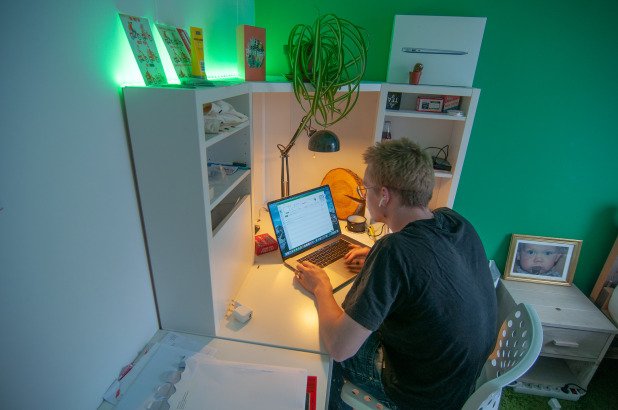Summary History Chapter 1 Part 1: A New Age
§ 1.2, What was the Renaissance
Important words:
Classical = Things/Ideas from the Greeks and Romans
Literacy = Instructed to read and write (literature)
Patron = Someone who has the money to encourage and protect art
Renaissance = The time when the classical ideas were ‘re-discovered’ (re-birth)
Renaissance man = Someone who has studied and is interested in many subjects
Renaissance:
Renaissance means ‘re-birth’. This name is chosen because the classical ideas were ‘re-born’ in this time. The people got interested in the classical ideas and found scholarship and art more important. It started in the 15th century in Florence, Italy because there were many sources from the Romans left there.
Why did the Renaissance happen?
There are 5 main reasons why the Renaissance started:
1. The invention of the Printing press
2. Merchants and travellers travelled all over the world to spread and pick up new ideas
3. The growth of universities spread the study of classical works
4. The increasing value placed on education and literacy.
5. Rulers and churchmen had the money to encourage art and scholarship and became patrons
Characteristics of Renaissance art:
- Linear perspective
- Working with light and shadow
- Study of the human anatomy
- Influenced by classical art
- Mathematical approach
§ 1.3, Renaissance in the Low Countries
Important words:
Northern Renaissance = The Renaissance in the Low Countries (northern countries)
Northern Renaissance:
The cities such as: Antwerp, Bruges, Ghent and Brussels became centres of the Northern Renaissance. This was because they were full of wealthy and important people, whom could easily employ artists, architects and scholars. In the Low Countries we were mainly know for our good music and art.
Pieter Brueghel:
The paintings of Pieter Brueghel are very useful when you examine the society of the low countries, because Pieter Brueghel painted the ordinary people in his paintings. But also because his paintings were inspired on the landscape of the Low Countries.
§ 1.4, Printing
Important words:
Change = Something that’s completely new
Development = Something that builds on what went before, an improvement
Moveable Type = Single letter blocks out of lead/wood, together form a whole page
Printing Press = A press that squeezed the paper hard against the type, used to print things
Paper:
The Chinese found a way to make paper about 100AD and started trading with the Arabs. But in the battle of Talas in 751 the Arabs captured Chinese paper-makers and learned the secret. They set up paper mills throughout their empire and in the 12th century started trading with the Europeans. But like the Chinese the Arabs failed keeping the skill of making paper secret. Demand mainly came from merchants, who used it for record keeping. Paper was better for printing because of a smoother surface.
Moveable Type:
Before the moveable type was invited they made use of block-printing. But this wasn’t a good enough way of printing, because the printing blocks took a very long time to make (carve everything in) and afterwards they broke very easily. Dutch printers developed the printing system a lot, but they didn’t invented it, the Chinese did.
Impact of printing:
The most important period in the invention of the printing press was from 1471-1480, because in this period the most printers’ workshops were built in Europe. Italy and the Low Countries were very wealthy in this time, this may have affected the amount of printers’ workshops that were built.
The Netherlands became the centre of book-printing in the 17th century, because after the fall of Antwerp in 1585 many printers moved to Amsterdam. Also because books were censored more heavily in other countries, so some books could be printed in the Netherlands when not in Spain.
§ 1.6, Vesalius
Important words:
Anatomy = The study of the human body
Dissection = Cutting up the human body to also study it from the inside
Paracelsus:
A Swiss-German doctor in Medicine, called Paracelsus gave lectures in the university of Basel. At his first lecture he burnt books by Galen and Avicenna, because he thought: “Books don’t make you a doctor, your patients are the only books.” He also spoke in German, which was strange because Latin was the language of Medicine.
Vesalius:
Vesalius had studied medicine at the university but continued studying anatomy. He obtained his knowledge by dissection/cutting human bodies up. Although it was very hard for him to find bodies, because no one alive would allow it and the church forbid dissection on dead people.
On the Fabric of the Human Body:
The Fabric of the Human Body was a book written by Vesalius. It was very important because Vesalius made many drawings in it. He was the first to label his drawings and explain what everything was. In this way he could easily convince other doctors, who could check it afterwards.
§ 1.7, Exploration and Trade
Important words:
Expedition = A journey to find a new route (to the Indies)
Explorers = People who go on an expedition to explore new (sea) routes
Motive = The reason why someone goes on an expedition
Treaty of Tordesillas = The pope divided the Atlantic ocean in 2 (N-S) the Spanish got the lands west, the Portugese the east.
Why did they go?
At the end of the 15th century explorers set out to find a new route to the Indies. They had several motives:
- Convert more people to Christianity
- People started to believe that the world was round
- They wanted to make their countries ‘bigger’ by adding colonies/land
- The luxurious goods were worth much and a new trade route would make you rich
- Technical improvements made them able to cross the ocean:
1. Ship design improved 2. Navigation system improved
Spain and Portugal had the biggest influence on the first decades of exploration.






REACTIES
1 seconde geleden